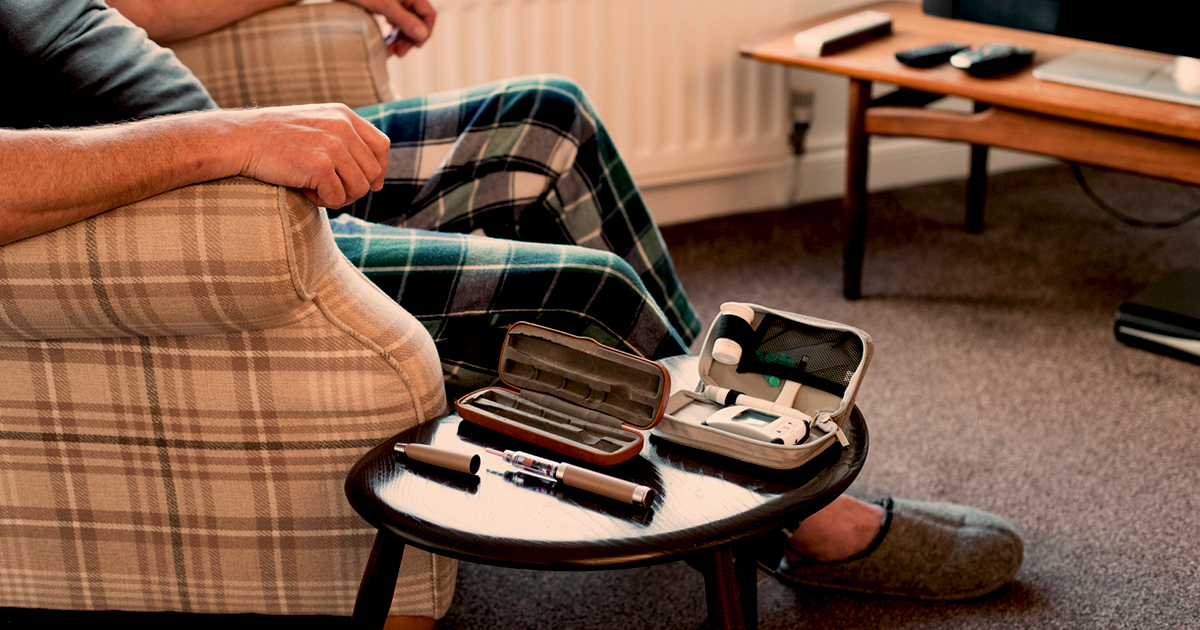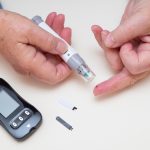At Diabetes Canada, hypoglycemia is defined as a blood glucose level of ≤ 3.9 mmol/L, regardless of whether you experience symptoms or not. The danger of hypoglycemia is that glucose is constantly needed by brain cells. Without glucose, brain cannot function normally, which can lead to loss of consciousness (coma) and death.
A healthy person has mechanisms of protection against hypoglycemia: with a decrease in blood glucose (for example, during physical exertion), the production of own insulin stops immediately, and glucose begins to flow from the liver to the blood – the glucose level in the blood rises and hypoglycemia does not develop.

Hypoglycemia, as a rule, develops only in patients with diabetes mellitus receiving therapy with insulin or other hypoglycemic drugs.
It is impossible to immediately remove excess sugar-lowering drugs or insulin from the blood (the exception is the administration of insulin with an insulin pump, the effect of which can be stopped), and glucose can enter the blood from the liver quite slowly or may not be enough to restore the normal level in the blood. That is why hypoglycemia in diabetes requires immediate action.
Sometimes you may experience symptoms of hypoglycemia with normal blood glucose values (above 3.9 mmol/L) – these are called false hypoglycemia. They occur if you have lived for a long time with high blood glucose and are used to it.
False hypoglycemia is not dangerous and does not require any measures. The body gradually adapts to normal blood glucose levels and false hypoglycemia ceases.
Causes of the Disease
The causes of hypoglycemia are many. After the treatment of hypoglycemia, it is important to analyze what caused this condition in order to further reduce the likelihood of its recurrence.
- Overdose of insulin. Error in calculating the dose of insulin, malfunctioning syringe, inconsistencies in the syringe concentration of insulin in the vial or cartridges.
- Excessive physical activity. Short-term unplanned physical activities without taking carbohydrates climb up the stairs, longer or more intense physical activity.
- Lack of carbohydrate foods. Skipping meals, not eating enough carbohydrates, or increasing the interval between insulin injections and eating.
- Alcohol intake.
Symptoms
Hypoglycemia is manifested with the following signs:
- dizziness;
- sweating;
- shiver;
- palpitations;
- pallor;
- hunger;
- double vision
- sharp weakness;
- anxiety and fear;
- loss of consciousness;
- nightmares.
Treatment of Mild Hypoglycemia
Hypoglycemia is considered mild if sugar level is not lower than 3.3 mmol/L. A patient should:
- Stop physical activity.
- Measure blood glucose.
- Take easily digestible carbohydrates if the glucose level remains low or symptoms persist if measurement is not possible: 4-5 pieces or 4 teaspoons of sugar, 200 ml of sweet fruit juice, 7 large glucose tablets of 3 g each.
- Re-measure the level of glycemia in 10-15 minutes.
What to Do Next?
If it is still a very long time before the next meal (for example, hypoglycemia develops at night), then after stopping hypoglycemia it is advisable to eat another slowly digestible meal (1 piece of bread, for example, or several crackers, or a muesli bar).
It is not advisable to stop hypoglycemia with chocolate and chocolate candies, sandwiches with butter, cheese, sausage, since fats contained in them slow down the absorption of carbohydrates.
Treatment of Severe Hypoglycemia
Severe hypoglycemia develops with a sugar level of <3.3 mmol/L. The main method of treatment in an ambulance or hospital is an intravenous stream of 40% glucose solution until consciousness is fully restored. Therefore, the main thing that needs to be done is to urgently call the ambulance.
What Can be Done before Ambulance Arrives?
In case of severe hypoglycemia, the intake of carbohydrates in solid or liquid form through the mouth is contraindicated because of the risk of developing asphyxiation (suffocation). If consciousness and the ability to swallow are preserved, rubbing gel containing glucose or honey into gums is possible. The best alternative to the introduction of glucose at home before the arrival of doctors is the introduction of glucagon. Glucagon is a pancreatic hormone that releases glucose from the liver and thus increases its level in the blood. It can be bought at Canadian Health&Care Mall.
After administration of glucagon, consciousness usually recovers in 5-10 minutes. If this does not happen, the introduction can be repeated. After regaining consciousness, it is necessary to take digestible carbohydrates to restore glycogen stores in the liver. Talk with your doctor about the possibility of acquiring the drug and the technique for administering it, so that you can properly educate those who might be able to administer it later on.
Prevention
- Always carry sugar, sweet drink, tab-glucose cells or glucose-containing gel.
- Before the planned physical activity, reduce the dose of insulin or eat more carbohydrates.
- Measure your blood sugar regularly.
- Follow the doctor’s recommendations for insulin – do not change the dose yourself.
- Observe regularity in food intake.
- Limit alcohol – it has a lot of simple carbohydrates.
- If hypoglycemia occurs, be sure to analyze its cause and understand how to avoid it the next time.
- Remember that physical activity may require additional carbohydrate intake or a lower dose of insulin.
What Else Do You Need to Know?
- For added safety, always wear a medical bracelet / keychain / pendant with your data and information about your disease.
You can carry a diabetes patient’s passport with you, where it will be written about the disease being treated, a request to urgently call an emergency medical team in case of inappropriate behavior or lack of consciousness, your doctor’s phone and other people who need to be informed about what happened.
- Driving a car
- Asymptomatic hypoglycemia
With the course of the disease, a person living with diabetes may develop unrecognized hypoglycemia (asymptomatic hypoglycemia). You will stop feeling early precursors, you can feel good even with a blood glucose level below 3.9 mmol/L, and you will begin to experience symptoms only at much lower and more dangerous levels of coma. Discuss this situation with your doctor. You may have revised treatment goals and sugar-lowering therapy, as in case of hypoglycemia unrecognition, it is safer to maintain blood glucose in a higher range.
- Nocturnal hypoglycemia
Particular attention should be paid to nocturnal hypoglycemia, which may be caused by too much dose of basal insulin at bedtime or prandial insulin before dinner, drinking alcohol, or too intense exercise in the afternoon. Missed night hypoglycemia is evidenced by nightmares, wet sheets, a headache in the morning, very high morning glucose values in the blood. If you suspect nocturnal hypoglycemia, then measure your blood glucose at 2-4 a.m. This can be done regularly – once a week, for example.
Hypoglycemia and Driving
The diagnosis of hypoglycemia alone is not a contraindication to amateur driving a car. Limitations can arise with the development of late complications: retinopathy, leading to a decrease or loss of vision, peripheral polyneuropathy – damage to the nerve fibers of the legs with loss of sensitivity with the development of diabetic foot syndrome, when for healing a ulcerative defect it is necessary to ‘unload’ a leg for a long time.
Another situation that can serve as an obstacle to driving a car is frequent hypoglycemia, including unexplained severe hypoglycemia (hypoglycemia with impaired consciousness) or a complication of diabetes, such as unrecognized hypoglycemia. In this case, driving becomes extremely dangerous for both the driver and other road users.
If you do not have late complications of diabetes that can interfere with driving, and you control diabetes without frequent or severe hypoglycemia, then there are no restrictions on driving if you follow some simple rules:
It is necessary to carry out self-monitoring of blood sugar levels before and during the trip. If you plan a sufficiently long trip, and the glucose level is quite low, it is advisable to eat additional carbohydrates to prevent hypoglycemia. You should not start the movement if you feel the harbingers of hypoglycemia or have just stopped it.
Before traveling, never administer a dose of insulin in excess of your usual dose, and also follow the recommended time between insulin and food intake. Before traveling, do not eat carbohydrates in less quantity than usual. This is especially important if you are on therapy with hypoglycemic drugs that can cause hypoglycemia (sulfonylureas, glinides).
To conduct self-control during the trip, you need to exit the main road and stop in a place authorized for parking. In no case do not try to conduct self-control during the ride: it is as dangerous as typing text to send SMS messages. If you feel that your blood sugar is falling, stop immediately, self-monitor and stop hypoglycemia if necessary. After that, after 15 minutes, again check the blood sugar level, and if it is normal, and you have a completely clear consciousness, then after another 15 minutes you can continue to move. If for some reason you did not have a glucometer with you, but you feel symptoms of hypoglycemia, then in this case you need to stop, take digestible carbohydrates, wait for the symptoms to disappear and only after 15 minutes can you continue to move.
Keep digestible carbohydrates (sugar, tablets or gel with glucose, juice or a sweet drink) as close as possible – in the center console or in the front passenger seat. Do not store them in the glove compartment or trunk. Your regular companions should know where in the car you can find digestible carbohydrates. For long trips, stick to your usual routine, avoid long intervals between meals, take a stock of food with you so you can always have a bite, and avoid night trips that violate your usual rhythm.
For additional safety, always wear a medical bracelet/keychain/pendant with your data and information about your disease. And, of course, the general rules: never before or during a trip in a car drink alcohol, and or drive with speeding, then you and other road users will feel more secure.



